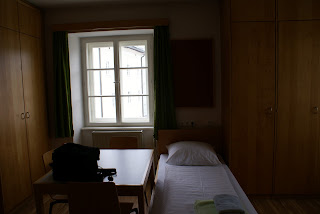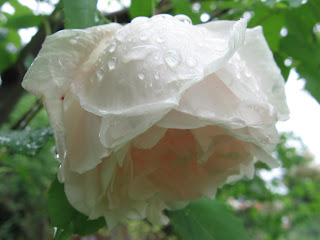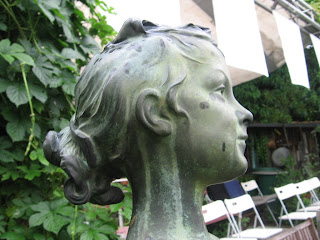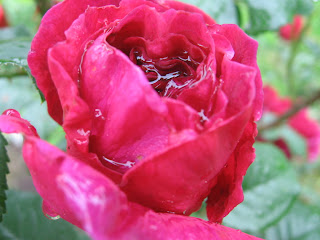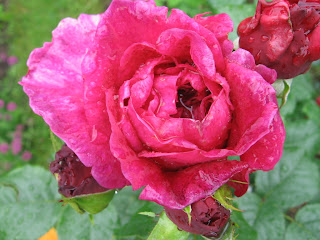31.05.13
Today we visited the Kunstgarten, a combination of flower and sculpture garden. It's run by a couple essentially out of their backyard, one of whom happens to be the brother of the program coordinator. Most of this post is just going to be flower porn that I'm not going to bother captioning, but I'll add information where I can.
At the entrance we encountered The Cat, who entertained the students.
There's a small stage area that can be used for performances or as display space for artwork; currently an artist who works with iron has a piece in this space.
Scattered throughout the garden are small statues.
Hanging rocks over a pond.
The garden features many varieties of rose. The fellow who tends the garden explained how roses are cultivated from cuttings once a good cross has been made, so any given cultivar of rose is essentially a clone organism scattered across the planet.
There's also a little greenhouse.
It was a rainy day, which gave me a good chance to play with the macro settings on Backup Camera. Austin's camera needed its battery charged and I didn't feel comfortable taking it out in the rain, anyway. Backup Camera still does a good job, even if it believes it's in 1980.
There were speakers installed in a few places. One of the art installations is the sound played in the garden.
Our guide explained that most of the rose varieties would be in full bloom in ten days, though there were still a bunch in bloom. This was my favorite.
This fractal statue is one of the larger pieces in the Kunstgarten.
This gray box is a beehive. Our guide explained that they don't harvest honey, but they need the bees to pollinate the fruit trees.
In addition to roses, there are also food plots. This plot of land has actually been used as a garden for about 80 years now. Originally it was intended as a place for poorer people to grow vegetables.
The garden also has some resident ducks who protect the plants by eating snails.
Here is our guide explaining his compost system.
Eventually, the compost breaks down into soil and twiggy bits.
The compost is then put through a sieve to remove the twiggy bits. The black material is plant ash that they're experimenting with as a soil additive based on the gardening traditions of South American indigenous peoples.
This is a flightless breed of duck that was cultivated in India to provide British colonists with eggs for breakfast when chickens proved to be ill-adapted to the wet climate. They like snails.
I liked this statue a lot.
In the house, they had a very extensive library on roses and gardening. This book is from the 16th century.
He showed us books from different centuries and explained how gardening books developed as printing technology improved. It was a very enjoyable and educational visit.



